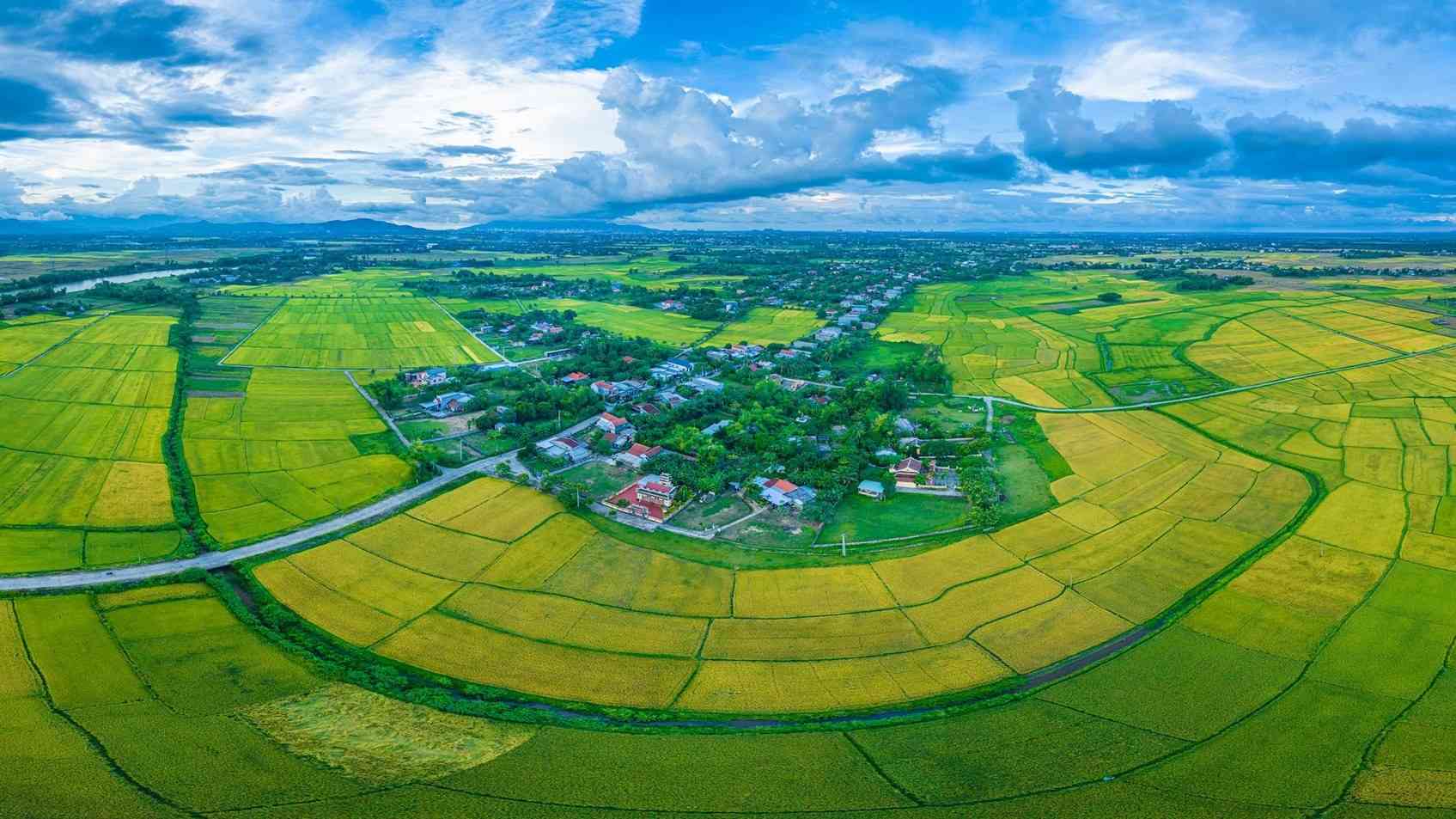Efforts to eliminate poverty, create a new look
In the period of 2021-2025, the work of building new rural areas (NTM) and sustainable poverty reduction in Quang Nam (old) and Da Nang (after the merger until now) has achieved remarkable progress, fundamentally changing the socio-economic appearance of the region, bringing the gap between rural and urban areas closer.
In the old Quang Nam province, the National Target Program on New Rural Development has mobilized a total of more than VND 27,324 billion. It is estimated that by the end of the 2021-2025 period, the whole province will have 144/186 communes meeting the NTM standards (accounting for 77%), of which 64 communes meet the advanced standards and 19 communes meet the model standards, exceeding the set target. Notably, no commune in the province has met less than 15 criteria. In addition to infrastructure, the OCOP program is also a bright spot with 564 products achieving 3 stars or more, including 2 5-star products, contributing to increasing the value of local agricultural products.
Along with the construction of new rural areas, poverty reduction work in the old Quang Nam has been vigorously implemented with the movement "Leaving no one behind". The province has mobilized over VND 11,000 billion, supported the construction and repair of more than 8,100 temporary houses, and implemented 364 livelihood projects. Thanks to that, the multidimensional poverty rate has decreased sharply from 7.79% in 2021 to 3.86% by the end of 2025, far exceeding the target assigned by the Prime Minister. In particular, the work of eliminating temporary and dilapidated houses has completed 100% of the plan with 12,298 houses handled as of October 2025.

For the old city of Da Nang, the results of building new rural areas also recorded impressive figures. The city has 11/11 communes meeting the NTM standards, Hoa Vang district (old) has reached the finish line since 2015. The city's OCOP program has recognized 171 products, affirming the local trademark. Regarding social security, Da Nang sets an ambitious target: by the end of 2025, the remaining poverty household ratio will be 0%, completing a sustainable poverty reduction project with a total implementation cost for the period 2021-2025 of more than 1,225 billion VND.
Merging to reach the level of ecological agriculture
An important historical milestone in the organization of the agricultural sector will take place from July 1, 2025, when Da Nang city will merge administrative units. According to Resolution No. 09/NQ-HDND, the Department of Agriculture and Environment of Da Nang City was established on the basis of merging two Departments of Quang Nam Province and Da Nang City (old).
The new apparatus is being strengthened in the direction of "streamlining, compactness, and strength" with nearly 2,400 cadres, civil servants, and public employees, including 7 specialized departments and 16 affiliated units. This change is not just a mechanical combination but opens up a breakthrough phase based on 3 strategic foundations: basin coordination and interconnected ecological space. Optimizing land funds to form a food safety belt. Improving urban and rural living standards.
The agricultural and environmental sector after the merger focuses on strong digital transformation, towards the model of "Digital Governance - Smart City". Administrative procedures are cut to the maximum, bringing operational activities to the electronic environment based on transparent data.

Regarding the regional economic development orientation for the period 2026-2030, the Department of Agriculture and Environment of Da Nang focuses on developing high-tech agriculture in coastal plains and the economy under the forest canopy in the midlands and mountainous areas. Key projects are promoted such as: Forming a medicinal plant industrial center with Ngoc Linh ginseng as the main plant; developing Tra My cinnamon raw material area; Project to plant large native timber forests and build disease-free livestock areas.
In particular, environmental protection and climate change response are given top priority. The industry will develop a carbon credit project, strictly manage forest resources, sea and land. Projects such as flooded land conservation of Song Dam Lake, downstream of Thu Bon River or green lim nature reserve will be green shields to protect the ecosystem. In urban areas, classifying waste at source and completing domestic solid waste treatment plants such as Khanh Son is an urgent task to ensure the security of waste sources.
Looking back on the 50-year journey of formation and development, the agricultural and environmental sector is facing new opportunities. The merger and restructuring is not only to optimize the apparatus but also demonstrates the aspiration to build a green economy and smart agriculture. With a spirit of discipline, creativity and responsibility, the collective of industry cadres is determined to successfully implement the goals, contributing to shaping a sustainable, dynamic and harmonious Da Nang in the future.












